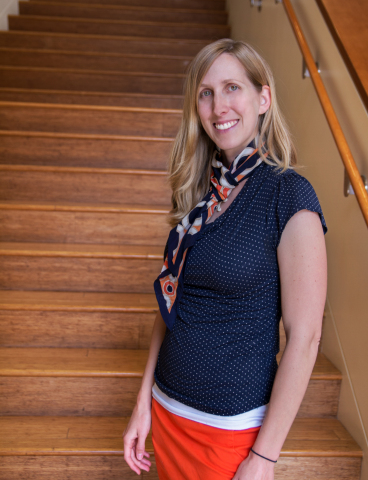PALO ALTO, Calif.--(BUSINESS WIRE)--Advances in pharmaceutical efficacy, solar cells and power conversion devices are just a few of the goals driving the five scientist-inventors selected as this year’s Gordon and Betty Moore Foundation Moore Inventor Fellows. Today, the foundation announced its 2017 cohort of scientist-inventors for their inventions in scientific research, environmental conservation and patient care.
Our co-founder, Gordon Moore, who also co-founded Intel, had a passion for science and a penchant for inventing that helped fuel the digital revolution. It was his purpose and drive that provided part of the deep history of science and invention at the core of Silicon Valley. In this same spirit, Moore Inventor Fellows seeks to support early-career scientist-inventors who are working on unique and groundbreaking projects. The fellowship gives these outstanding individuals the freedom and support they need to do their work, and help nurture them on their journey.
“Embodying Gordon Moore’s passion for science and penchant for inventing, the Moore Inventor Fellows are problem solvers seeking to develop new tools and technologies that will accelerate progress in scientific research, environmental conservation and patient care, three areas of interest to our foundation,” said Harvey V. Fineberg, M.D., Ph.D., president of the Gordon and Betty Moore Foundation. “These young inventors show great promise for creating positive outcomes for generations to come.”
Each fellow receives a total of $825,000 over three years to drive their invention forward, including $50,000 per year from their home institution. Starting with five fellows in 2016, the foundation plans to allocate nearly $34 million through 2026 to support 50 Moore Inventor Fellows.
“Our foundation provides these early-career researchers with time and freedom to develop ideas that will make a positive difference,” said Robert Kirshner, Ph.D., chief program officer of science at the Gordon and Betty Moore Foundation. “Nurturing these scientist-inventors within universities and providing them a glimpse of the outside world will help their ideas have a real impact.”
The 2017 fellows will be recognized at an event this evening at The Tech Museum of Innovation in San Jose, CA. The event will highlight the importance of invention and empowering early-career scientists inside and outside the academic setting. The event includes a panel discussion with Cori Bargmann, president of Chan Zuckerberg Science; Ilan Gur, founding director of Cyclotron Road; and Steve Quake, co-president of Chan Zuckerberg Biohub. During the event, Moore Inventor Fellows will share what their invention is and how they hope it will have an impact. A preview can be found below:
Jennifer
Dionne, Ph.D., associate professor, materials science and
engineering, Stanford University
Jennifer Dionne’s research
develops new optical materials to visualize and control nanoscale
processes. Her invention is a light-driven scheme for separation of
different forms of the same molecules, which she hopes to use to
increase the efficacy and safety of pharmaceutical drugs as well as
reduce the toxicity and environmental impact of chemicals used in
agriculture.
Viviana
Gradinaru, Ph.D., assistant professor, biology and biological
engineering, Caltech
Viviana Gradinaru’s invention is a safe
delivery vehicle capable of carrying large genomes to precise tissue
targets – a long sought after and transformative tool for both basic
research and therapeutic applications. Her goal is to understand and
influence whole-animal physiology and behavior for both the development
and degeneration of the brain.
Daniel
Ludois, Ph.D., assistant professor, electrical and computer
engineering, University of Wisconsin-Madison
Daniel Ludois’
invention is an electric motor based on electrostatic forces rather than
magnetic fields, eliminating the use of rare earth elements and copper.
His goal is to create light-weight electric motors that result in
sustainable higher performance and lower cost.
Matthew
Sheldon, Ph.D., assistant professor, chemistry and materials
science and engineering, Texas A&M University
Matthew
Sheldon’s invention uses new classes of nanomaterials to provide precise
control over how light energy moves through optical devices. His goal is
to use his invention to greatly improve the conversion efficiency of
solar cells, helping to make cheap and sustainable solar energy
available to everyone worldwide.
Xiaobo
Yin, Ph.D., assistant professor, mechanical engineering,
University of Colorado, Boulder
Xiaobo Yin’s invention involves
a tailored optical metamaterial that can convert incident sunlight into
longer wavelengths, which will dramatically increase the rate of
photosynthesis and provide high-yield crop production. The aim of this
invention is to develop engineering solutions for real-world
environmental challenges.
The Gordon and Betty Moore Foundation fosters path-breaking scientific discovery, environmental conservation, patient care improvements and the preservation of the special character of the Bay Area.









